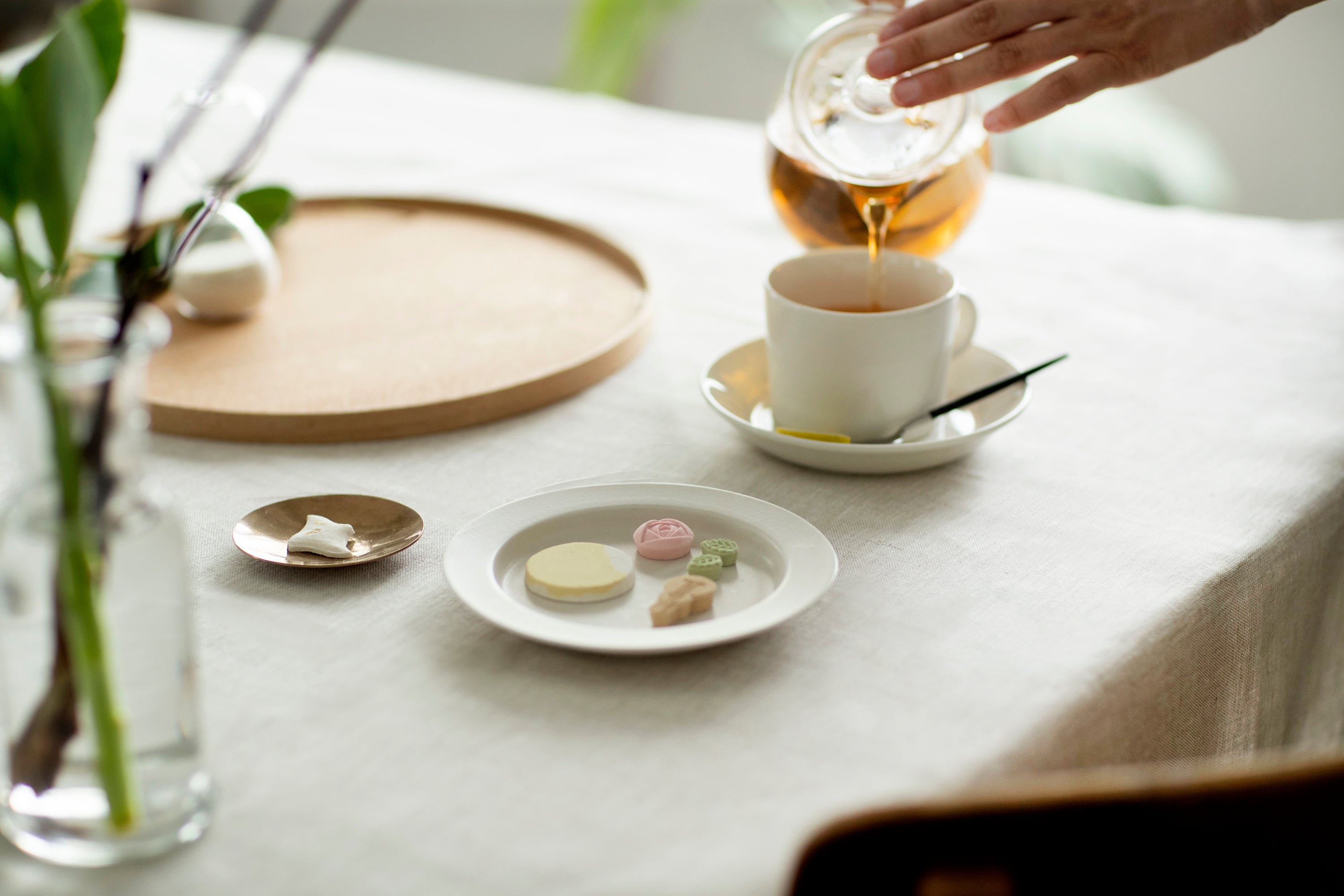The Birthplace of Sassisusetou | Interview with Ilbon

Sa, sue, and wasanbon.
A simple and rustic sounding phrase.
When you mutter the words out loud, they melt into your mind and linger pleasantly in your mind, like the lingering happy feeling you get after eating some wasanbon sugar.
The copy for HIYORI was written by Ilbon, the owner of the gallery Yolcha in Osaka. He is not a typical copywriter, but works as a " naming writer ," coming up with names. For example, they give names that are necessary in various situations in society, such as store names, stage names, product names, etc. On the other hand, they also have the face of a stage actor who performs on stage in shadow plays and puppet shows, and who focuses on storytelling and recitation.

Behind the copy that Ilbon and HIYORI came up with was a story that could only be found here.
Expressing HIYORI from the outside
Rather than directly communicating what we do and what is important to us, we want each person to receive it through softer words and a softer rhythm.
While I was thinking about this, I came across Ilbon's writing that was posted on Yorcha.
While various artists hold exhibitions here, Ilbon always writes in a way that gives the impression of the beginning of a story, describing "what kind of person this artist is."
It is an interesting story that tickles the reader's imagination, making them naturally want to visit the exhibition.
---Since I started the gallery, I have had to think of exhibition titles and artists' names, and give names to works and products. Sometimes I do this at people's request. Basically, I like to "guide" words. As I do this frequently, I realized that there is a demand for it.
What kind of words will Ilbon guide HIYORI to? How will those words reach you all, and what will they bring?
I was looking forward to hearing new words and asked them to create the copy.
The road to copying
First, we shared our ideas with each other and decided on the general outline of the copy.
After that, we choose which elements to include and which to eliminate, and then shape it into its final form.
The parts that we were unable to narrow down on our own were gradually sorted out within the character limit and from an objective perspective.
It was really interesting to feel my thoughts becoming clearer and clearer.
--- Originally, I was in the business of creating texts and reading them aloud, so a sense of rhythm is important in writing too. I hope that by having many different people humming the copy, we can reach a place we can never know.
That's what Ilbon says.
Although it was difficult, we finally completed a gentle copy that was somewhat reminiscent of poetry.
The presence of "Wasanbon born in Setouchi"
Here, we'll introduce some of the tricks hidden in the copy.
In Japan, seasonings commonly used at home have long been expressed using the sashisuseso system. Sa = sugar, shi = salt, su = vinegar, se = soy sauce, and so = miso. By combining these in exquisite ways, a variety of dishes can be made.
Even the catchphrase "Sashisuseto" suggests that there is another element in each sound.
There are many essential elements to making Wasanbon. The climate of the Setouchi region, the ingredients grown there, the people who harvest them, the people who refine the sugar, the people who carve the wooden molds... When all of these elements come together, the delicious harmony that can be heard is the name Wasanbon.
The next word, "Wasanbon," also contains the hidden message that adding Wasanbon to any everyday occasion will make the day a little more special!

Of course, there are no rules for how to appreciate words.
The benefit of using copy to communicate and the benefit of letting people feel it. It's interesting because it has both.
This very existence may be the HIYORI- ness that we want everyone to know.





